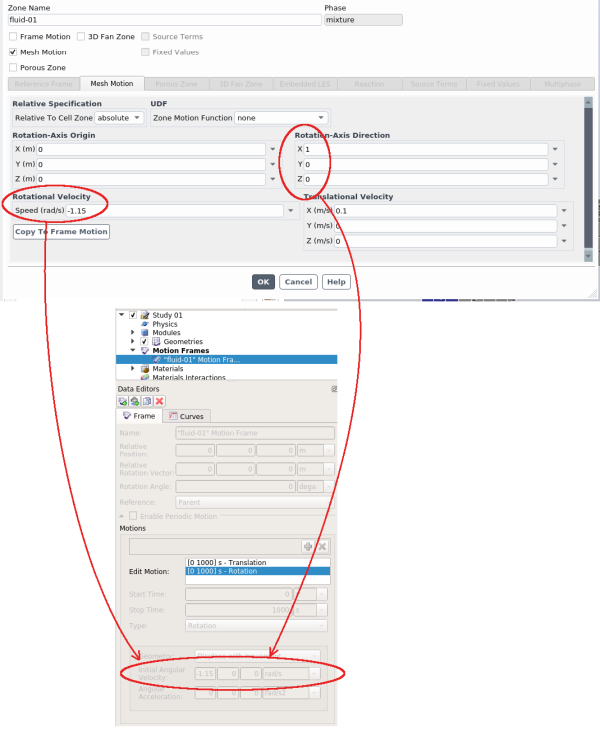In a DEM-CFD two-way coupling simulation, the particles are part of the fluid flow and will affect it in a two-way interaction, i.e., the particle movement is affected by the interaction with other particles and the fluid around it while the flow is also affected by the particle presence.
On the Rocky side, the fluid flow will exert forces upon the particle, including pressure gradient (including buoyancy) force, drag force, and virtual mass force (optional). On the CFD side, the reaction of the forces upon the particles will be applied over the fluid phases.
If geometries are shared between the two programs and movement of these geometries are also desired, Moving Meshes can be enabled for the geometry on the Fluent side and those settings will be automatically converted into a Rocky Motion Frame upon importing the CAS file (Figure 8.1: Motion settings in Fluent (top) are automatically converted into a new Motion Frame in Rocky (bottom).). In this way, a consistent motion for the shared geometry can be achieved between the two programs.
Figure 8.1: Motion settings in Fluent (top) are automatically converted into a new Motion Frame in Rocky (bottom).

The scheme used in the Rocky DEM-CFD two-way coupling allows both solvers to run in parallel, which can considerably decrease simulation time if the solvers do not compete for resources. During setup within the Rocky coupling interface, you can control the number of processors required by each solver to avoid resource competition. Also, since Rocky can make use of GPU and Multi-GPU processing, an alternative to increasing the coupling performance is to set the CFD solver to run on CPU cores and set Rocky to run on the GPU cards.


